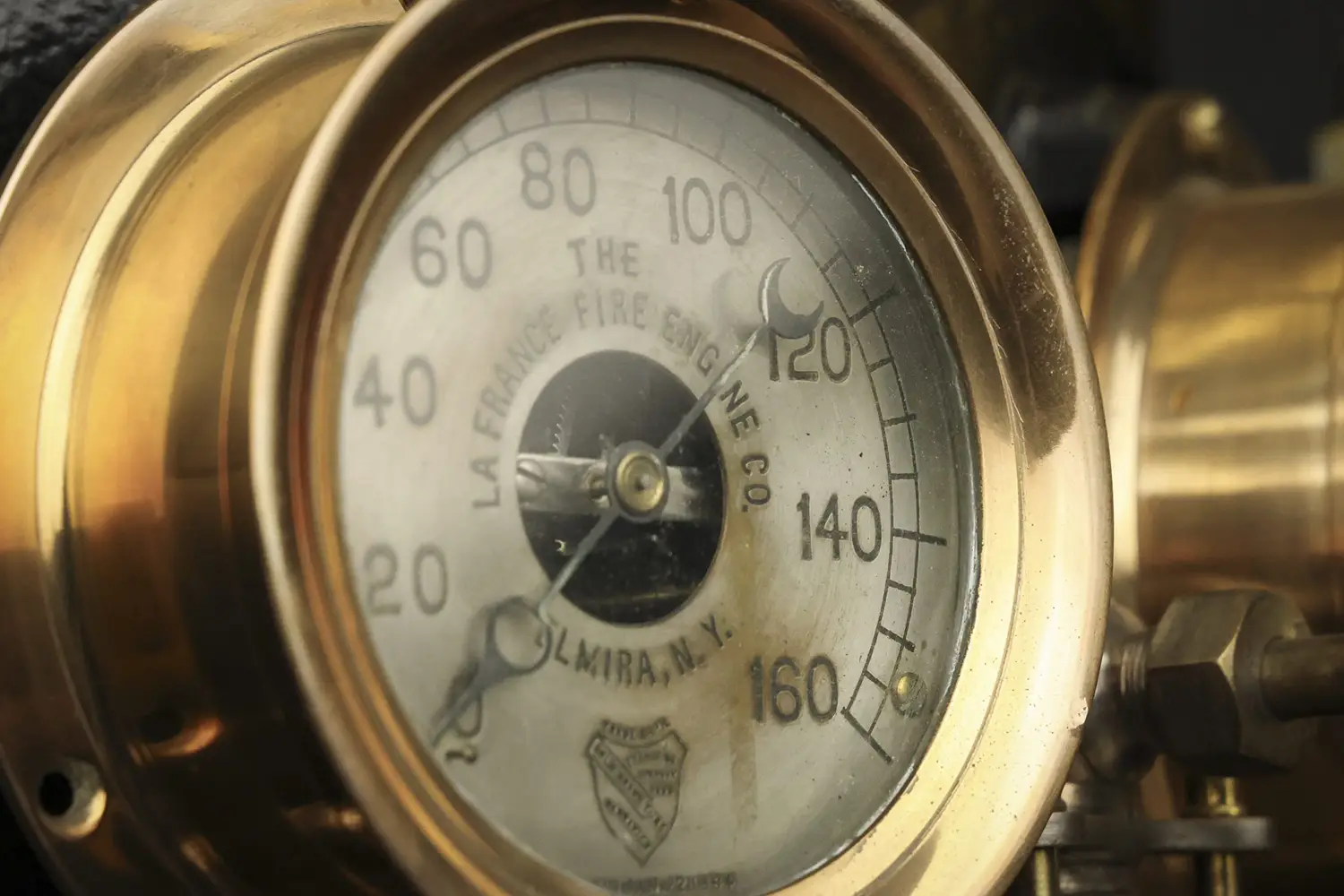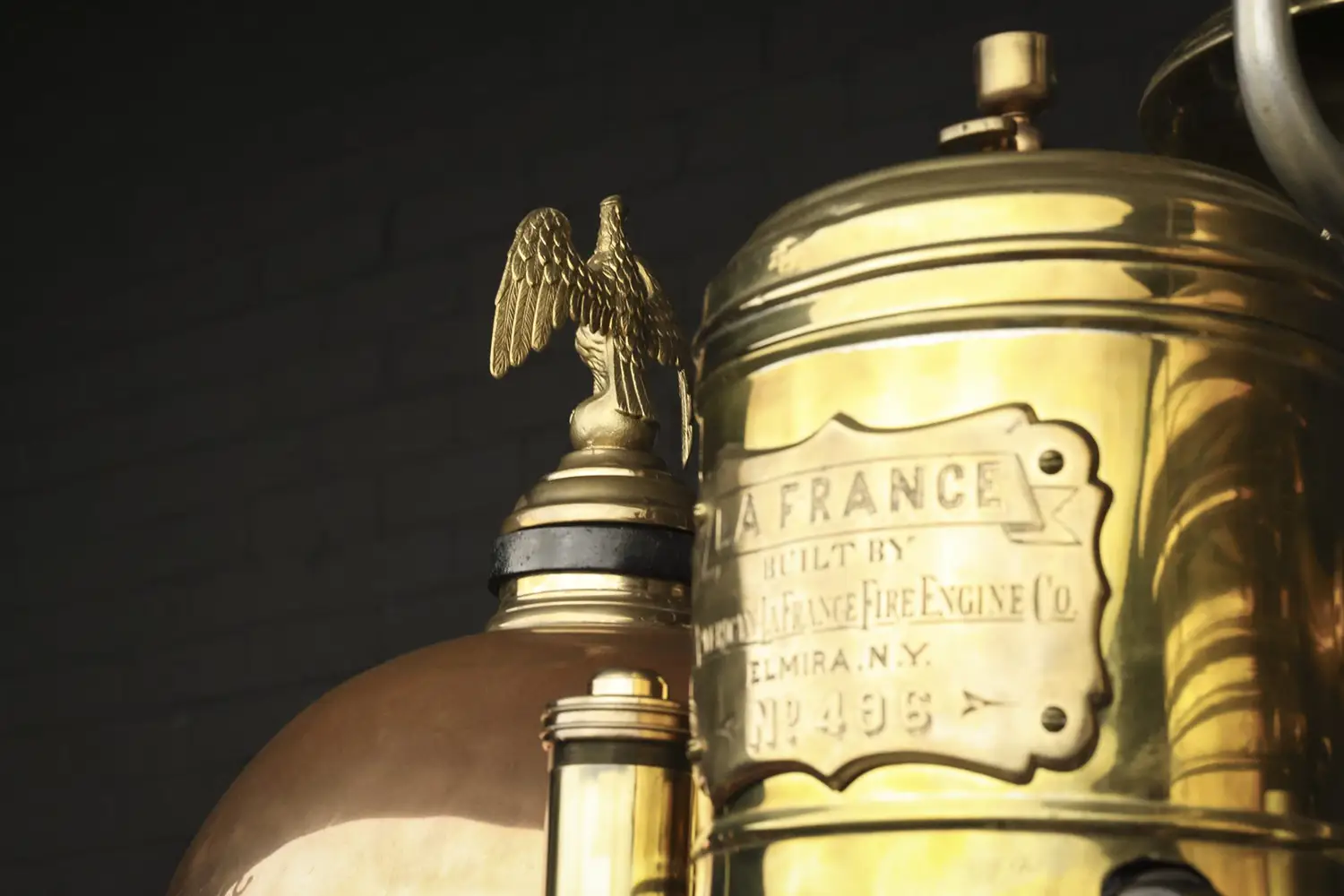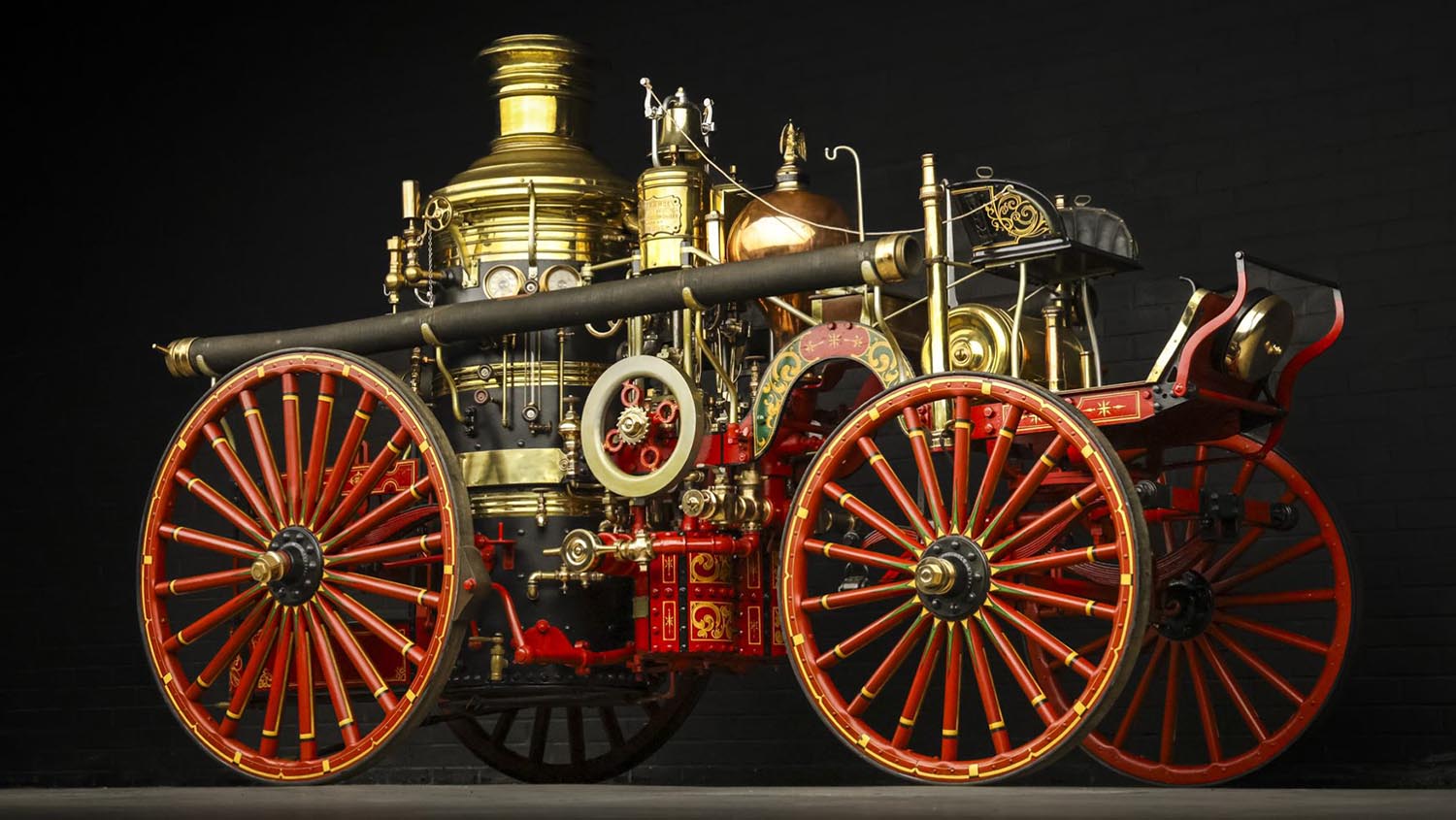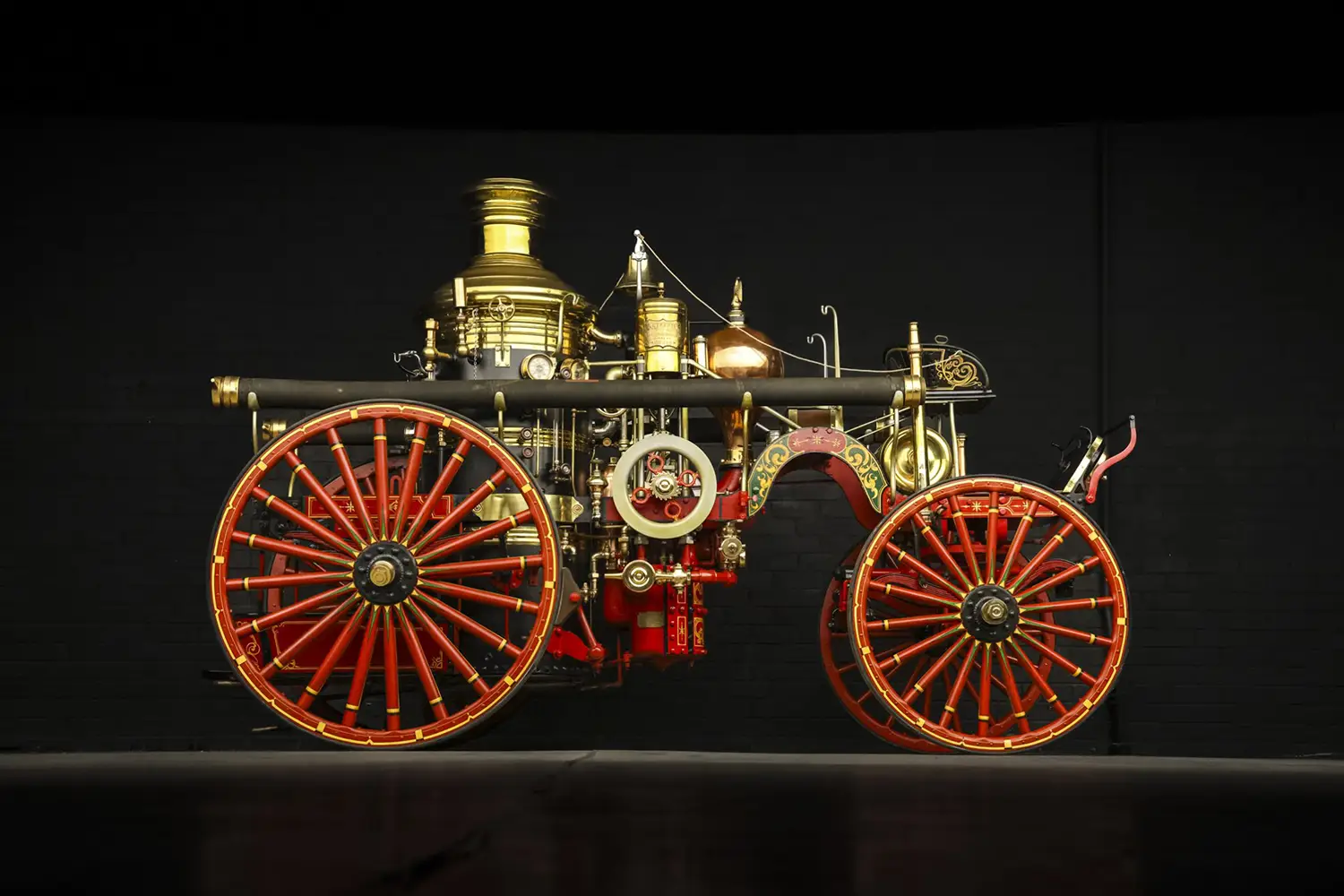
The 1904 American LaFrance Metropolitan Steam Fire Engine is an incredible artifact of early 20th-century emergency response. It stands as a powerful reminder of the era before self-propelled motorized equipment became standard. This second-size Metropolitan pumper was originally built for the Greensboro Fire Department in North Carolina. Its long, storied service career spanned through the 1930s before it transitioned into parade use. Ultimately, this specific steam pumper holds the special distinction of being the first engine built under the newly formed American LaFrance name.
The Foundations of American LaFrance
The company’s origins trace back to the LaFrance Manufacturing Company, founded in 1873. LaFrance started by producing hand-powered pumpers and soon advanced to steam-powered wagons. In 1900, LaFrance merged with other firms to form the International Fire Engine Company. This entity was quickly renamed the American LaFrance Fire Engine Company in 1903. This particular 1904 model, therefore, represents the beginning of the brand’s long and dominant run. It embodies a critical period of innovation in firefighting technology.

Design and Historic Service
The Metropolitan dual-piston model was designed for peak efficiency. It required a trained team of horses to quickly pull the massive wagon to the scene. The second-size designation indicates a substantial pumping capability. It could deliver approximately 700 to 800 gallons of water per minute (GPM). The wagon is painted a deep red with elegant gold-color motifs highlighting the frame rails. Additionally, green and black accents were added during a recent, comprehensive refurbishment. The rear of the apparatus still features the initials of the Greensboro Fire Department.
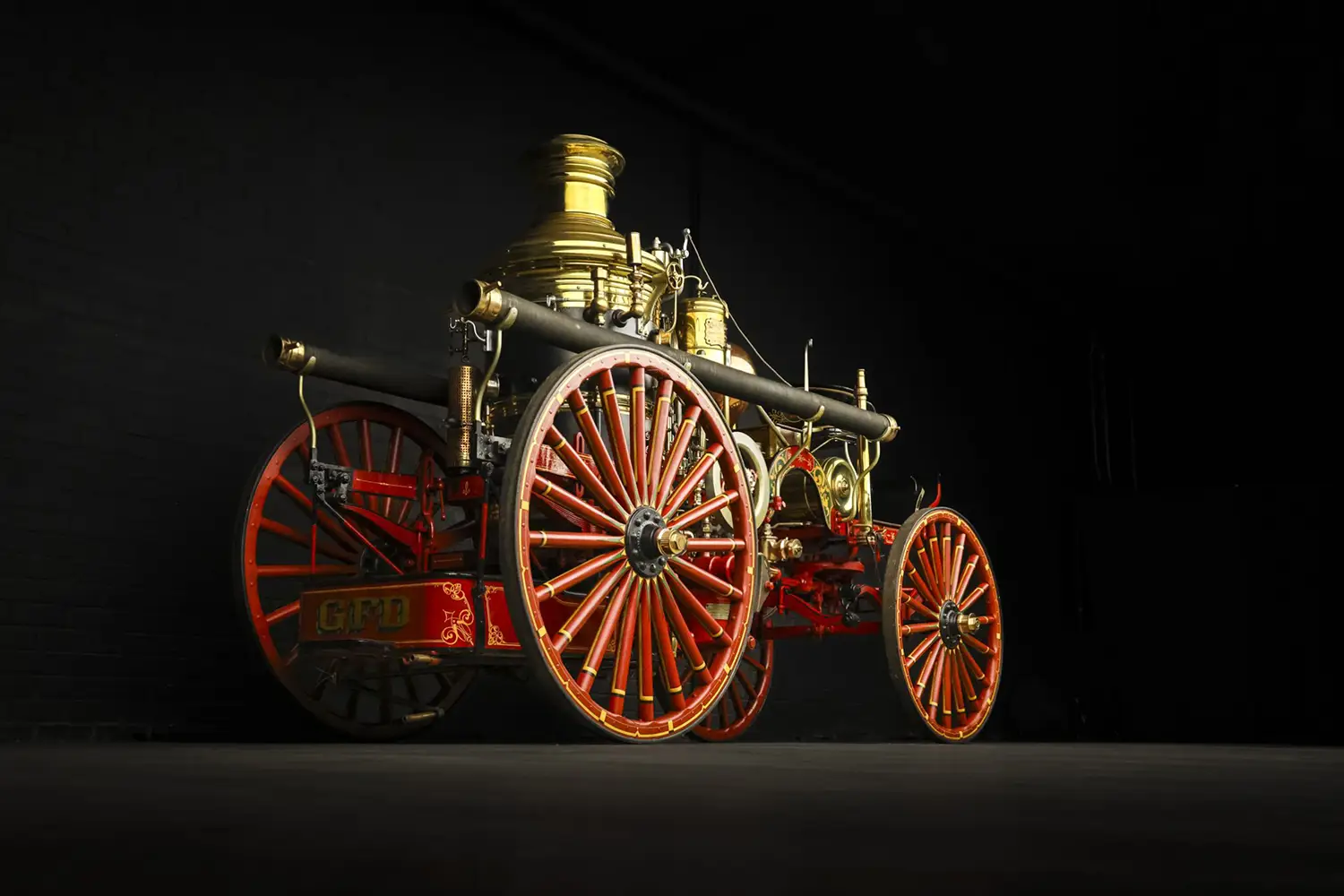
Frame, Suspension, and Maneuverability
This classic fire engine features robust wooden artillery wheels. These wheels were recently refinished and wear solid rubber tires for reliable traction. An important design element is the “crane-neck” frame. This unique design allows ample clearance for the front wheels to execute a full 180-degree turn. This was crucial for navigating the narrow city streets of the era. The suspension system uses semi-elliptical leaf springs in the rear. These are linked to a single transverse leaf spring up front, absorbing the rough roads.
Power Generation and Pumping Technology
The operational core of the pumper is its coal-fired water-tube boiler. This boiler is designed to quickly build up the necessary steam pressure. The steam is then fed to a pump equipped with two large pistons and dual flywheels. This system creates a powerful vacuum to draw water from an external source, such as a pond or cistern. Water is expelled through three discharge outlets, supplying the attack hoses. Steam and water pressure are monitored by gauges, while a steam whistle serves as a loud warning signal.
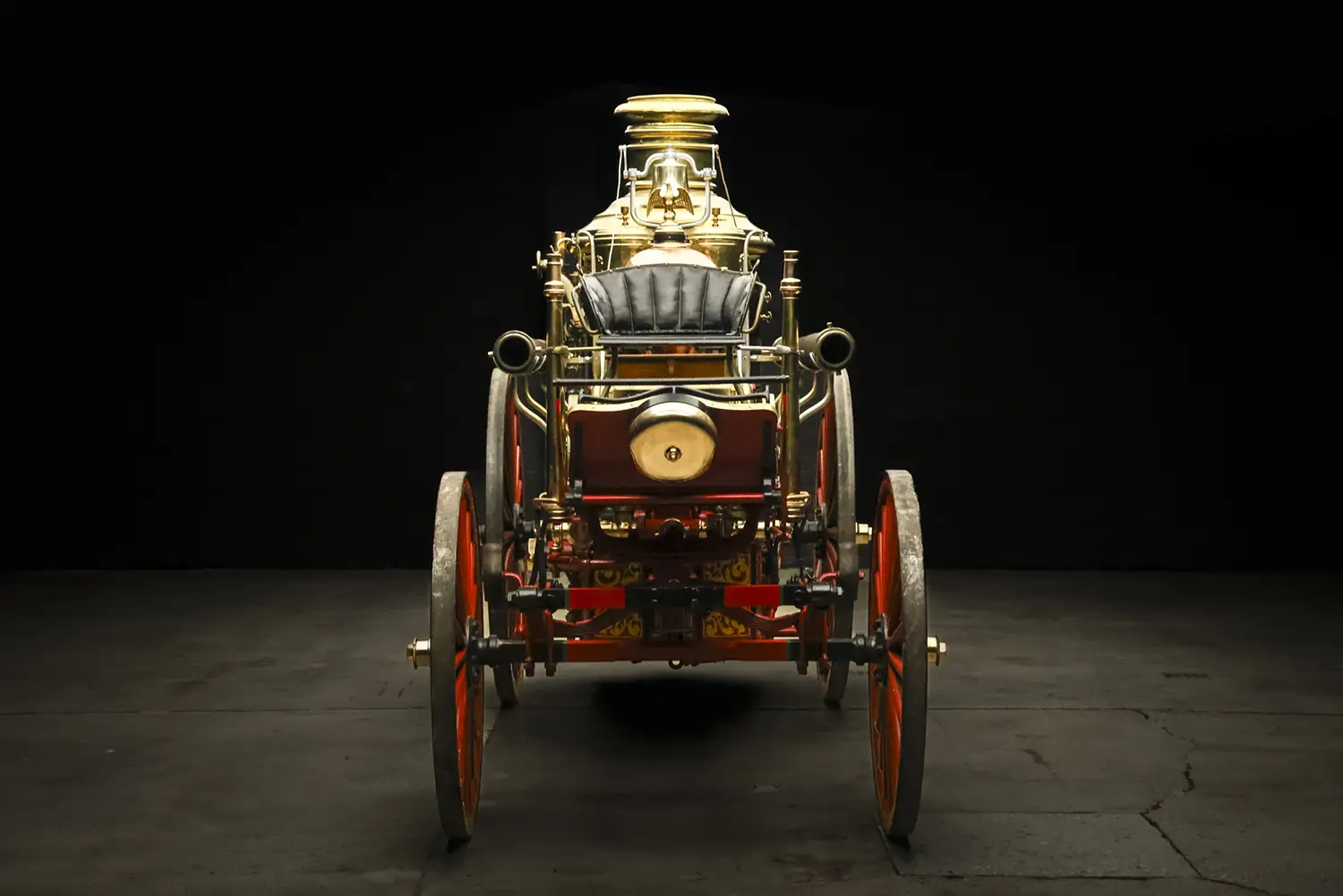
Braking and Driver Controls
The driver’s position features a padded seat trimmed in black upholstery. This provides some necessary comfort for the operator. Foot controls are simple and direct, designed for quick action. A simple push button activates a bell gong, alerting pedestrians and traffic. Braking is handled by a series of levers and rods connected to a push-bar. This system actuates single brake blocks that contract directly against the solid rubber tire surface of the rear wheels.

The Pumping Performance
The 1904 American LaFrance system delivered raw, immediate mechanical power. The two-piston pump could generate a powerful, consistent stream. While we do not have specific horsepower figures for the pump engine, the sheer volume of 700-800 GPM highlights its capabilities. This ability to deliver a massive volume of water quickly was absolutely vital in containing widespread fires. The suction hoses draw the water, and the attack hoses direct the high-pressure stream, a process that relies entirely on the boiler’s output. It represents the height of turn-of-the-century performance.
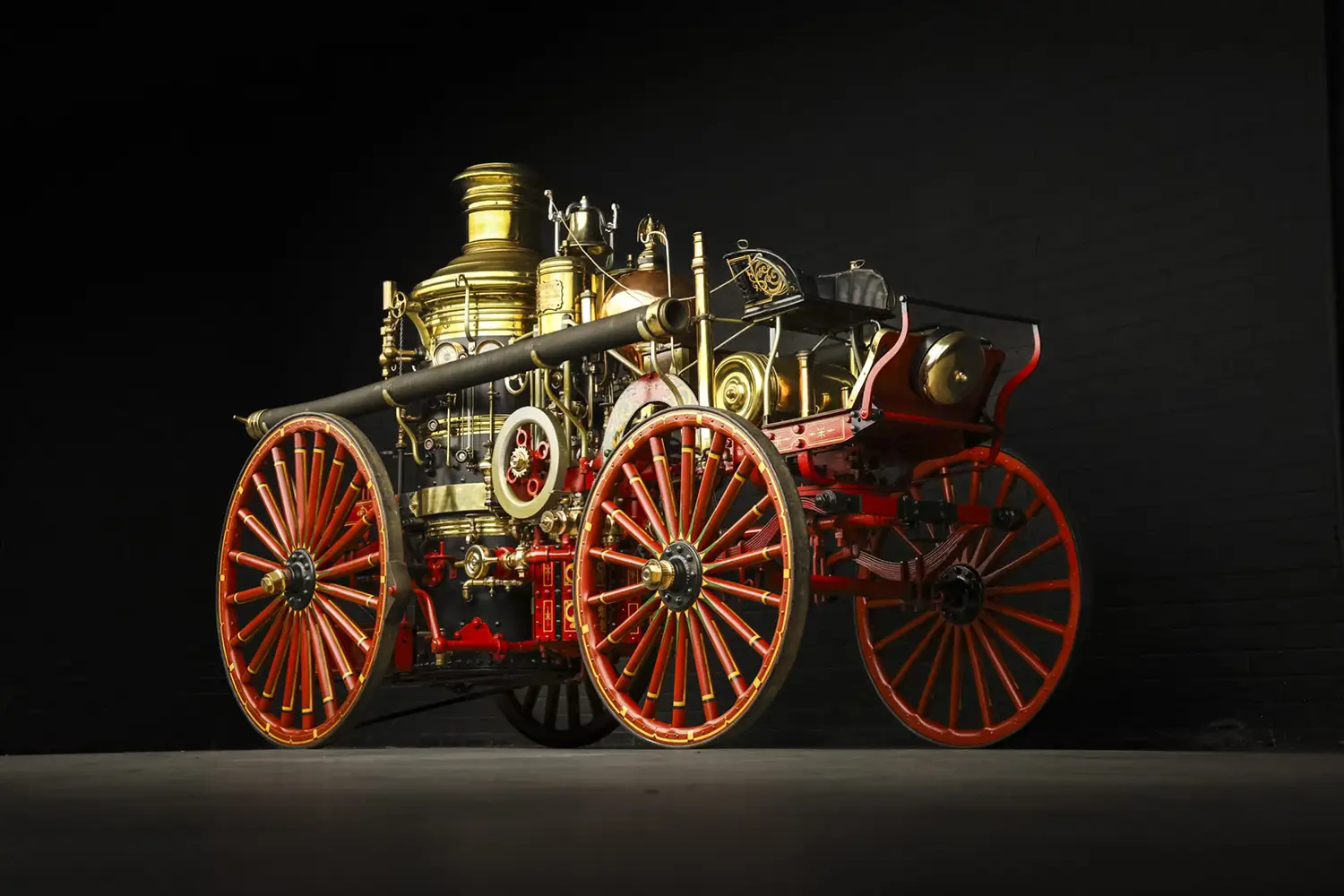
Summary
This 1904 American LaFrance Metropolitan Steam Fire Engine is an exceptional example of early American ingenuity. It carries an incredible history, from fighting fires in Greensboro to being displayed in various museums. The recent refurbishment ensures its striking red, black, and gold details are fully preserved. As a second-size Metropolitan pumper, it showcases the industrial might and technical skill required for life-saving municipal services in the early 1900s. It is a prized collectible for any enthusiast of mechanical history.
Disclaimer: Content on this site is for informational and entertainment purposes only. Details, analyses, and opinions reflect current trends and personal views, not professional or financial advice. Always verify information with official sources before making any decisions.
Source: bringatrailer.com
